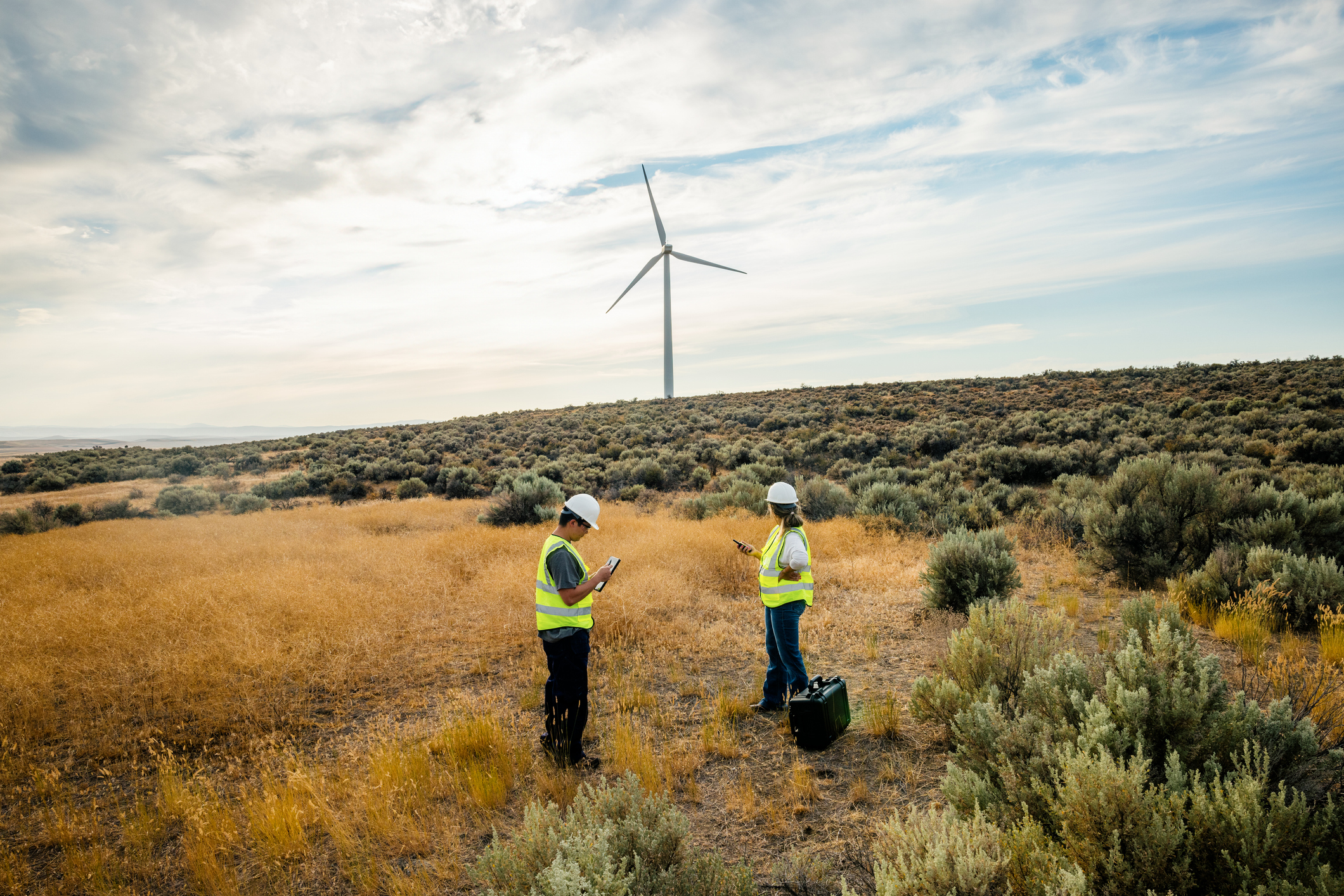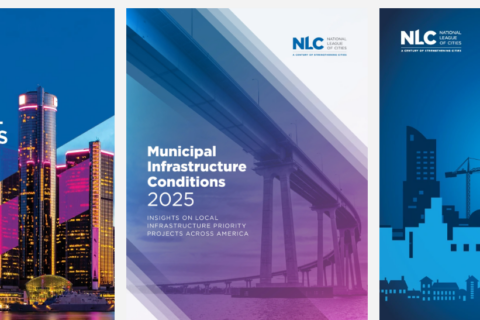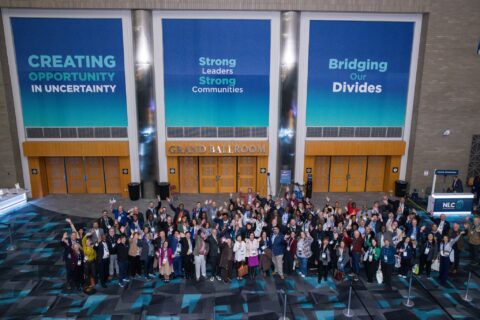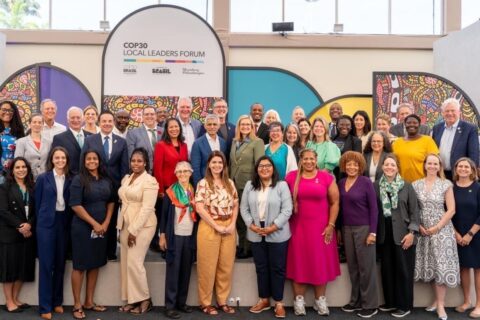Last month, Congress passed the One, Big, Beautiful Bill Act (OBBBA) that contained important changes to the Elective/Direct Pay mechanism created through the Inflation Reduction Act (IRA). As we approach the four-year anniversary of the IRA, it is critical that local leaders understand the new timelines and requirements for EV and clean energy project eligibility, as well as be fully prepared to take advantage of the tax credits while available.
Here is a look at the key dates and deadlines for utilizing the direct pay tax credits as updated through recent legislation.
Immediate Deadline for Action on Electric Vehicle Purchases
For communities looking to convert municipal fleet vehicles to electric vehicles, the time to purchase those vehicles is now. With the changes from the OBBBA, the tax credit for clean commercial vehicles (45W) terminates for vehicles acquired after Sept. 30, 2025. To be eligible, vehicles must be in the possession of the local government by this date.
Additionally, for communities looking to install EV charging infrastructure for fleets or consumers (or other alternative refueling infrastructure), the alternative fuel charging (30C) tax credit terminates for property placed in service (in use) after June 30, 2026. This tax credit is for infrastructure located in a low-income or non-urban census tract.
Resources
- The Electrification Coalition has several resources to support cities, towns and villages with EV and charging infrastructure purchases as well as filing for Direct Pay.
- Vehicle Procurement Support: Access to available vehicle stock via Drive EV Fleets is focused on deliveries before Sept. 30 for tax credit requirement.
Short-Term Deadlines for Solar and Wind Projects
For communities pursuing solar or wind projects under the Investment Tax Credit (48E) or Production Tax Credit (45Y), there are several deadlines to keep in mind.
- Projects that begin construction before Dec. 31, 2025: there are no changes to eligibility rules.
- Projects that begin construction between Jan. 1 and July 4, 2026: tax credits are retained, but the project must meet new supply chain restrictions, as described below, in order to be eligible for the tax credits.
- Projects that begin construction after July 4, 2026: the project must be placed in service by the end of 2027 and meet new supply chain restrictions in order to receive the tax credits.
In the coming weeks, the U.S. Department of the Treasury is expected to issue new guidance regarding the definition of “begin construction” as directed by a recent Executive Order, which could further impact project eligibility.
While these projects can take years to plan, develop and implement, communities are encouraged to make as much progress on their solar or wind projects as possible this year if they plan to claim a tax credit through elective pay. Local leaders should also assess their current or near-term projects against these new deadlines and accelerate project timelines if possible.
Resource
Lawyers for Good Government developed a guidance brief providing an overview of the changes to the tax credits available through Elective Pay, as well as a guidance brief that defines and details the “beginning of construction” date that impacts tax credit eligibility.
Long-Term Planning for Geothermal, Hydropower, Nuclear and Battery Storage Projects
For communities investing in geothermal, hydropower, nuclear or battery storage projects under the Investment Tax Credit (48E) or Production Tax Credit (45Y), there is a longer tax credit eligibility period compared to the original deadlines from the IRA.
- Projects that begin construction by Dec. 31, 2033 are eligible for the full tax credit.
- Projects that begin construction in 2034 will receive 75% of the credit value. In 2035, that amount falls to 50% and is terminated at the end of 2035.
Additionally, all projects that begin construction after Dec. 31, 2025 must meet new supply chain restrictions.
Resources
- NLC developed a series of fact sheets on these energy technologies to help local leaders make informed decisions for their community’s energy future.
- The U.S. Department of Energy program offices provide helpful information for communities on geothermal, hydropower, nuclear and energy storage.
Supply Chain Considerations Around Foreign Entities of Concern
The OBBBA creates new limitations on projects where a Prohibited Foreign Entity may be involved. This includes making payments to such entity where it is deemed that “effective control” (generally meaning operations) of the project/facility has been conveyed or where the manufactured products or components in a facility are heavily sourced from such entities. These complex rules (and often opaque processes) could make it challenging for local governments to meet the requirements and be eligible for the tax credits through elective pay.
The U.S. Department of the Treasury is expected to release additional guidance on implementing these restrictions in the coming weeks.
Resource
New York University Tax Law Center provides a primer on the Prohibited Foreign Entity Rules.
How to Claim Elective Pay Tax Credits for 2024/2025 Projects
Local governments can still claim the elective pay tax credits for eligible projects completed in 2024 and 2025 based on the community’s fiscal year or tax year. Projects completed in this timeframe are not impacted by changes from the OBBBA (aside from the Sept. 30, 2025 cut off for EV purchases).
The next deadline for filing is Nov. 15, 2025, which applies to communities with a July 1-June 30 fiscal year/tax year and covering projects completed between July 1, 2024 through June 30, 2025.
Jan – Dec
Fiscal/Tax Year:
May 15
Deadline
July – June
Fiscal/Tax Year:
November 15 Deadline
Oct – Sept
Fiscal/Tax Year:
February 15 Deadline
NLC, in collaboration with the Government Finance Officers Association, created a simple step-by-step instruction manual to guide your city through the filing process.
Additionally, local leaders can register for the Local Infrastructure Hub Workshop on Sept. 25 at 12 PM EST on filing for Direct Pay.
Take Action
Any community that previously filed for Direct Pay in 2024 or 2025 is encouraged to add their project to the Local Government Direct Pay Tracker to help build out a public dashboard and show the impact of the clean energy tax credits. The projects are also feeding into NLC’s Rebuilding America dashboard of infrastructure projects.
Local leaders should also let their Members of Congress know the clean energy projects planned in their community and how the tax bill changes will impact the viability of those projects.
Sharing your story is key to a possible reinstatement of the tax credits in the future, ensuring cities, towns and villages continue have funding and financing streams for future clean energy projects.
Get Involved
Help strengthen America’s cities, towns and villages. Using our collective voice, we can ensure Congress and the Administration partner with local governments and make local issues a priority in federal policy. Learn more about NLC’s Federal Advocacy initiatives and explore how you can get involved.









